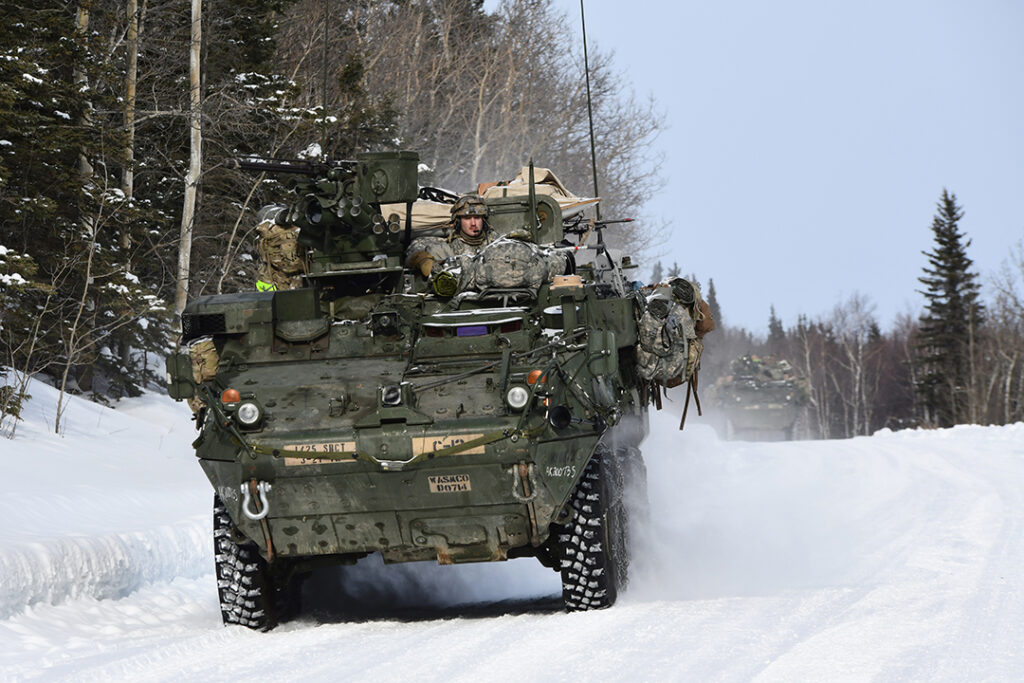Forum Staff
The U.S. Army is considering a plan to reconfigure its Alaska-based Stryker Brigade into a more mobile infantry unit better suited for cold-weather fighting in the Arctic.
Army Secretary Christine Wormuth said she expects to decide soon about the unit, known for its heavy eight-wheeled vehicles. “I think right now the purpose of Army forces in Alaska is much more about creating an extreme cold-weather capable formation” that could be used in Europe or the Indo-Pacific, Wormuth told The Associated Press (AP) during a recent trip to Joint Base Elmendorf-Richardson, Alaska. “We’re trying to get to a place where we have Arctic-capable forces — forces that can survive and operate in that environment.”
Under the plan, the 1st Stryker Brigade Combat Team, 25th Infantry Division, would be converted to a light infantry brigade. Combined with the division’s 4th Infantry Brigade Combat team, the two units will become the 11th Airborne Division, based in Alaska. The large Stryker vehicles, pictured, would be replaced by vehicles better suited for snow and icy terrain, Wormuth said.
The changes will assist the U.S. amid increased competition with Russia and the People’s Republic of China (PRC) in the Arctic. Russia has taken steps in recent years to increase its military presence there, and the PRC views the region as economically valuable for shipping and natural resources. This comes as warmer temperatures have opened sea lanes for longer periods of time.
The renewed focus on cold-weather fighting includes a move to conduct training for the Alaska-based Stryker troops in their home state and under weather conditions they would face in the Arctic. The troops had been scheduled to conduct exercises at Fort Polk, Louisiana, in March 2022 but were kept in Alaska to train in frigid temperatures.
“I think it really makes sense to have forces trained in the Arctic environments that they would be used for,” Wormuth said after spending two days at the base, according to the AP. “If we’re going to have ground forces in Alaska, that’s what we need them to be able to do. They can’t get that experience going to the Mojave Desert or to Fort Polk.”
Wormuth said she is nearing a decision on the Stryker Brigade, but final approval would come from U.S. Defense Secretary Lloyd Austin. In recent conversations with congressional lawmakers, she said the change would not reduce the number of troops in Alaska. Although the infantry brigade would become smaller, the Army would offset that loss by increasing the size and capabilities of its headquarters, she said.
So far, the U.S. has resisted moves to militarize the Arctic, even as Russia has expanded its military presence and basing there. But, added Wormuth, “Will that mindset continue given what the Russians are doing in Ukraine? Or will that get revisited? Will that create a window to think about things differently?”
In addition, questions have risen recently about whether one of the Pentagon’s combatant commands — the European Command or Colorado-based Northern Command — should take full ownership of the Arctic and the U.S. military role there. Wormuth said the issue needs further discussion, and any decision could be years away.
IMAGE CREDIT: JOHN PENNELL/U.S. ARMY

